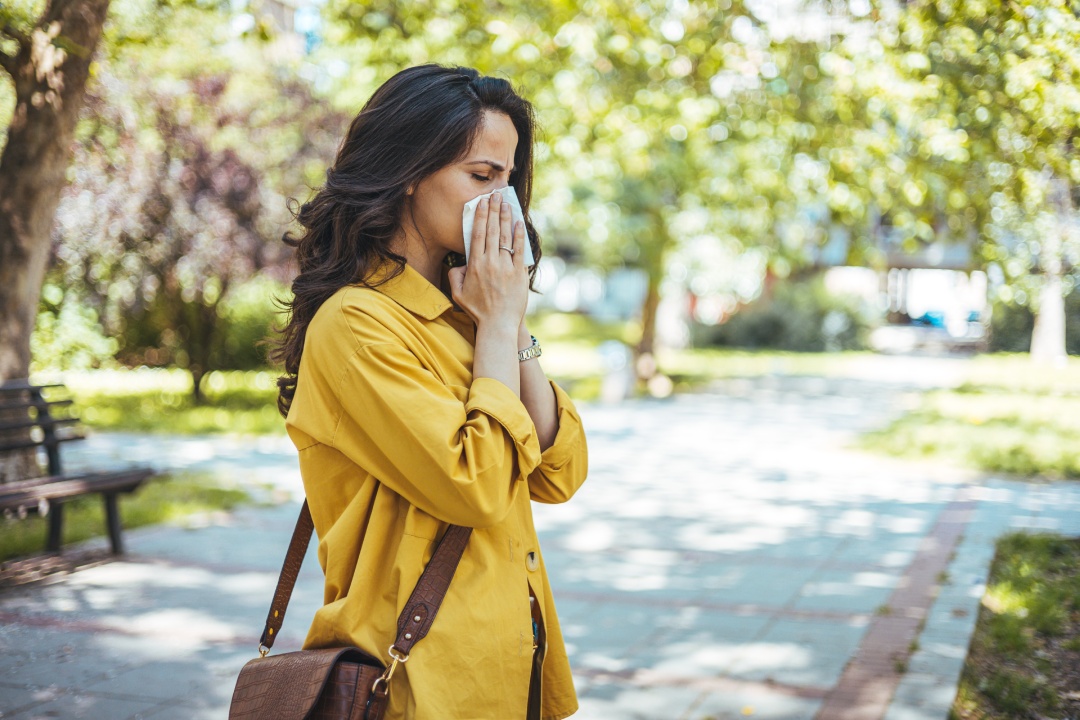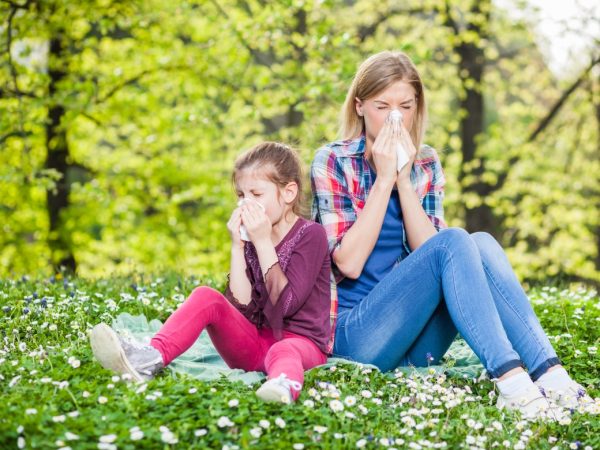Spring Allergies in Texas: How to Find Relief from Seasonal Allergens
Spring in Texas is a season of vibrant wildflowers, sunny skies, and warmer temperatures – but for many, it’s also a time of relentless sneezing, itchy eyes, and stuffy noses.
The culprit? An explosion of pollen from trees, grasses, and weeds, making Texas one of the most challenging places for seasonal allergy sufferers. In fact, the Asthma and Allergy Foundation of America (AAFA) ranks several Texas cities among the worst in the U.S. for allergies, with pollen counts often soaring to record highs during spring.
Understanding Spring Allergies in Texas
There are ways to minimize your exposure to allergens and find relief. In this guide, we’ll explore the causes of spring allergies in Texas, common triggers, and practical solutions to help you breathe easier this season.
What Are Seasonal Allergies?

Seasonal allergies, also known as hay fever or allergic rhinitis, occur when your immune system overreacts to allergens in the environment, such as pollen, mold, or grass. These allergens are harmless to most people, but for those with allergies, they trigger symptoms like sneezing, congestion, and watery eyes.
Why Texas is Unique for Allergies
Texas is notorious for its challenging allergy seasons, and spring is one of the most difficult times of the year for allergy sufferers. Several factors make Texas a hotspot for seasonal allergies:
- High Pollen Levels: The warm climate and extended growing season mean plants release pollen earlier and for a longer period than in other regions.
- Cedar Fever: One of the most infamous allergies in Texas is caused by mountain cedar trees, which release large amounts of pollen in late winter and early spring, leading to intense symptoms like itchy eyes and severe sinus congestion.
- Variety of Allergens: In addition to cedar, Texas springs are filled with pollen from oak, elm, pecan, and ash trees, as well as grass pollens that peak later in the season.
- Geographical Factors: Texas’s diverse landscapes, ranging from coastal plains to central hill country, contribute to a wide range of allergens. The dry winds often spread pollen across vast areas, increasing exposure.
The Pollen Problem in Texas
Texas is home to some of the highest pollen counts in the country. For example, in peak allergy months, tree pollen levels can reach over 1,000 grains per cubic meter of air – a level considered “very high” by allergy experts. This widespread pollen exposure makes it nearly impossible to avoid allergens completely.
Common Symptoms of Spring Allergies

Spring allergies can manifest in various ways, often mimicking the symptoms of a cold or other respiratory conditions. Recognizing these symptoms early can help you take effective steps to manage them and reduce discomfort.
Sneezing
One of the most common allergy symptoms, often occurring in rapid bursts.
Nasal Congestion
A stuffy nose caused by inflamed nasal passages due to allergen exposure.
Runny Nose
Clear, watery discharge from the nose as the body attempts to flush out allergens.
Itchy Eyes, Nose, or Throat
A hallmark symptom of allergies, often accompanied by redness and irritation.
Watery or Red Eyes
Resulting from histamine release, leading to inflammation and irritation in the eyes.
Postnasal Drip
A sensation of mucus dripping down the back of the throat, causing coughing or throat irritation.
Coughing or Wheezing
Particularly common in people with asthma or respiratory sensitivities, as allergens can trigger airway inflammation.
Fatigue or Brain Fog
Persistent symptoms can disrupt sleep and energy levels, leading to exhaustion and difficulty concentrating.
How to Identify Your Triggers
Understanding what triggers your spring allergies is the first step toward finding relief. In Texas, spring brings a unique set of allergens that vary by region, making it essential to pinpoint the specific causes of your symptoms.
-
Track Pollen Counts
Use apps or websites that provide daily pollen forecasts specific to your area. These tools can help you correlate your symptoms with high allergen levels.
-
Keep a Symptom Diary
Record when your symptoms occur, including time of day and weather conditions. This can help you identify patterns and specific triggers.
Visit an allergist for skin or blood tests to pinpoint your specific allergens. This is especially helpful if over-the-counter remedies aren’t providing relief.
Effective Ways to Find Relief

Spring allergies in Texas can be managed with simple strategies and the right treatments. Here’s how to find relief:
1. Minimize Allergen Exposure
Stay indoors during peak pollen times (mornings, windy days).
Close windows, use HEPA filters, and vacuum regularly.
Shower and change clothes after outdoor activities to remove pollen.
2. Try Over-the-Counter Medications
Antihistamines: Relieve sneezing and itching.
Nasal Sprays: Reduce inflammation for lasting relief.
Decongestants: Ease nasal congestion (short-term use).
Eye Drops: Soothe itchy, watery eyes.
3. Use Natural Remedies
Local Honey: May build immunity to local pollen.
Saline Rinses: Clear allergens from nasal passages.
Essential Oils: Eucalyptus or peppermint can ease congestion.
4. Allergy-Proof Your Environment
Use air purifiers with HEPA filters.
Wash bedding in hot water weekly.
Control humidity to prevent mold growth.
Allergy Testing: When to Seek Professional Help

While many allergy sufferers can manage their symptoms with over-the-counter remedies and lifestyle adjustments, some cases require professional care. Here’s when it’s time to consult an allergist:
1. Symptoms Interfere with Daily Life
Persistent congestion, fatigue, or difficulty breathing impacts your ability to work, sleep, or enjoy everyday activities.
2. Over-the-Counter Treatments Aren’t Enough
If antihistamines, nasal sprays, or other remedies fail to provide relief, you may need a more targeted treatment plan.
3. Uncertainty About Triggers
If you’re unsure what’s causing your allergies, an allergist can perform tests to pinpoint specific allergens.
4. Severe Reactions
Experiencing severe swelling, hives, or difficulty breathing after allergen exposure may indicate a more serious condition like asthma or anaphylaxis.
5. Long-Term Solutions
If allergies are a recurring issue, treatments like immunotherapy (allergy shots) can help build tolerance and reduce symptoms over time.
Allergic Cough – Causes, Symptoms & Relief
An allergic cough is a persistent, dry cough triggered by allergens such as pollen, dust, pet dander, and mold. Unlike a cold or flu, it’s not caused by an infection and typically comes without fever or body aches.
Key Points Covered:
-
What it is: A cough caused by allergic reactions, often seen in people with asthma or hay fever.
-
Common triggers: Pollen, dust mites, mold, pet dander, and air pollutants.
-
Symptoms: Dry cough, itchy throat, sneezing, nasal congestion, and sometimes wheezing.
-
Diagnosis: Allergy testing and medical evaluation to rule out other conditions.
-
Treatment options: Antihistamines, decongestants, nasal sprays, allergy shots, and air purifiers.
-
Prevention tips: Allergen-proof bedding, regular cleaning, avoiding outdoor allergens, and using HEPA filters.
By identifying triggers and following a consistent management plan, those affected can reduce symptoms and improve their quality of life.
Get Relief From Allergies With Kuye Medical Group
Don’t let seasonal allergies disrupt your life. We specialize in diagnosing and treating allergies with personalized care tailored to your needs. If you’re dealing with cedar fever, pollen allergies, or other triggers, our expert team is here to help you breathe easier and feel better.
Make an appointment so you can finally have an allergy season without sneezing, tearing up or itching.





